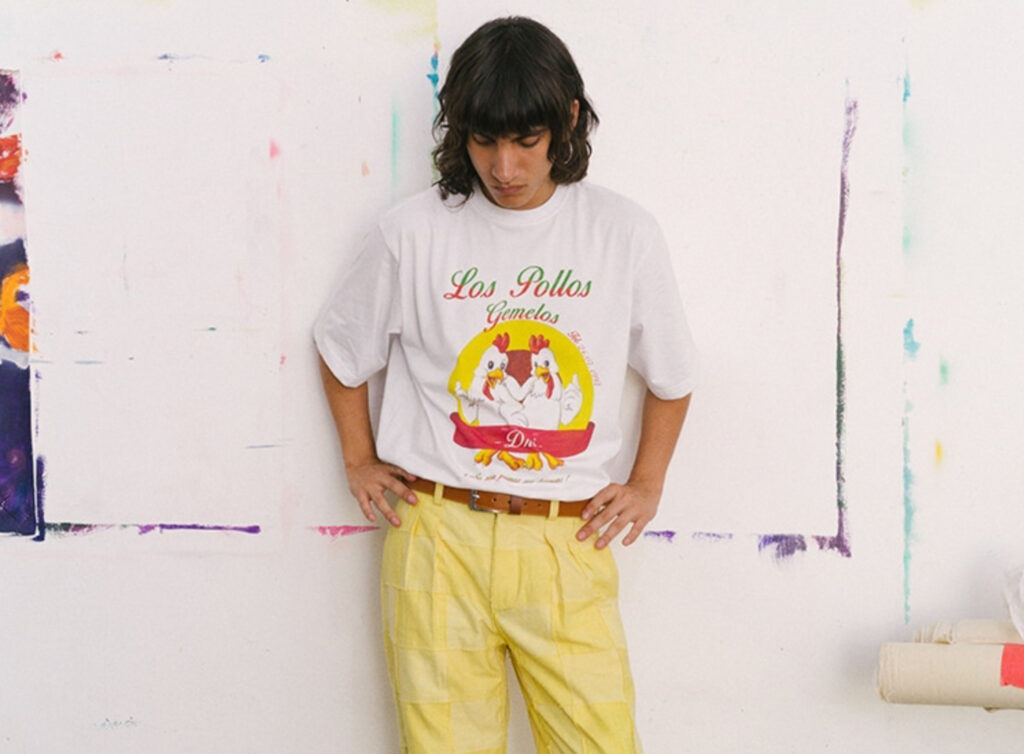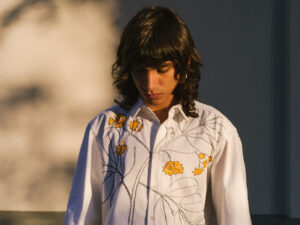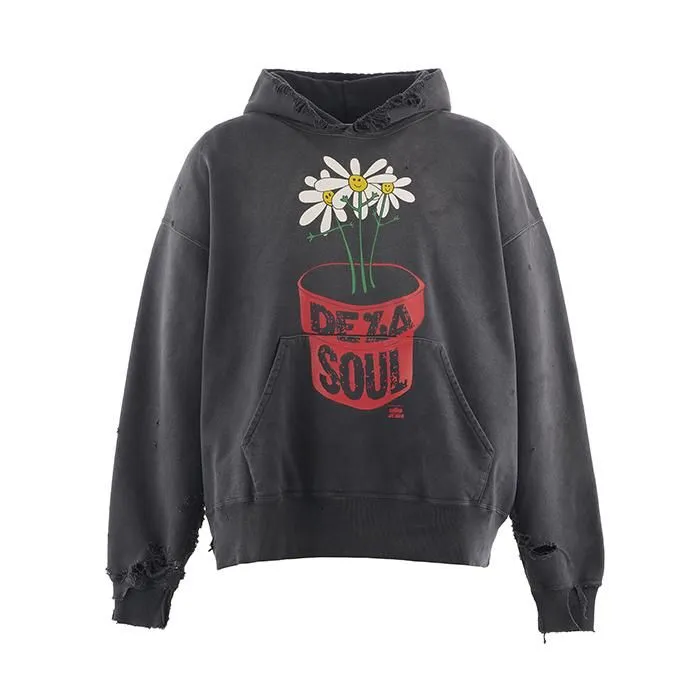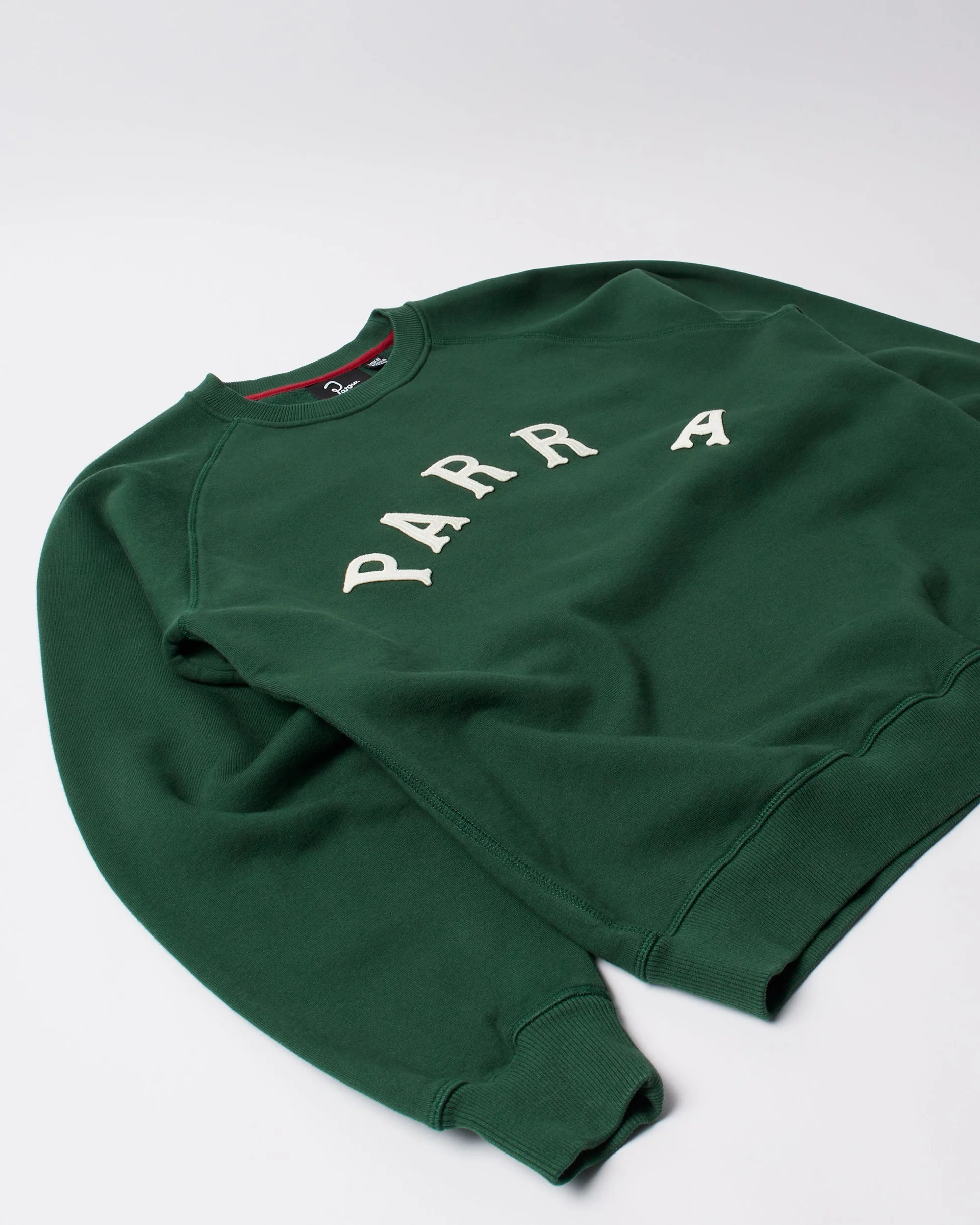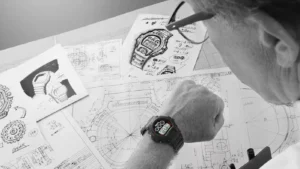
On April 26, D.N.I unveiled a collection that feels less like a traditional seasonal offering and more like a deeply personal excavation: “Mi abuelo murió bailando” (My grandfather died dancing). Through the lens of photographer Raul Guillermo and the styling finesse of Paulo Ruiz Muñoz, the Peruvian label charts a tender, poetic course — one that does not simply dress bodies, but clothes memories, grief, and an immortal sense of joy.
The name itself immediately disarms. Death and dance — two polar conditions of existence — are braided together in a single phrase. Rather than suggesting a binary between life and loss, the title embodies their continuum: a gesture toward the resilience of spirit, the way movements survive beyond mortality, and how memory is passed not just through stories, but through gestures, through rhythm, through flesh. In D.N.I’s hands, fashion becomes a kinetic archive — an echo of ancestral footsteps still reverberating across concrete floors and dusty fields.
At its core, “Mi abuelo murió bailando” is a sartorial love letter to Peru’s layered cultural history — a history constantly in flux between indigenous legacies, colonial scars, Afro-Peruvian influences, and the improvisations of contemporary life. But rather than aestheticizing these complexities in a museum-like nostalgia, D.N.I’s new collection insists on a lived, breathing heritage, where every shirt, every pair of trousers, every accessory bears the mark of a life still moving.
The Visual Language of Remembering
Raul Guillermo’s photography treats the garments not as static products, but as vehicles of energy. Each frame seems to pulse with breath, refusing the inert tableau common to commercial fashion imagery. Subjects lean, twist, lunge, and recline in a choreography of the everyday — one that evokes not stagecraft, but the instinctive dances of bodies recalling something older than themselves. There is an earthy immediacy to the compositions: textured walls, cracked pavements, muted urban peripheries.
These are not romanticized settings, but sites where the past and present blur. The models, many of whom appear more like community members than traditional editorial faces, inhabit the clothing rather than posing in it. Movement — not perfection — is the through-line. Wrinkles in the garments, creases in foreheads, the casual slouch of a shoulder: these details affirm that the collection is meant for living bodies, for dancing bodies, for mourning and rejoicing bodies.
Color is used sparingly but deliberately. Neutral palettes dominate — dusty greys, sun-bleached browns, faded creams — punctuated occasionally by deeper blues and blood reds. These hues echo the colors of Andean landscapes, Lima’s weathered coastlines, and the stained interiors of family homes. Rather than relying on loud statements, D.N.I invites the viewer to look closer, to see the textures of experience embedded in every fiber.
Styling as Storytelling
Paulo Ruiz Muñoz’s styling complements this ethos with profound sensitivity. Layers are central: shirts over vests, jackets slung over shoulders, trousers with exaggerated pleats suggesting the layered garments of rural festivities or street processions. Accessories are understated but potent — woven belts, handkerchiefs, simple silver jewelry — hinting at rituals of dress that are less about fashion trends and more about familial habit and collective memory.
Shoes, often overlooked in editorial narratives, are given careful attention. Sturdy, worn-looking boots and soft, slip-on sandals evoke a lifetime of footsteps, traversing both literal and metaphorical distances. It’s an aesthetic that refuses polish for polish’s sake. Instead, it insists on honesty: the way clothes gather dirt, how fabrics wear at the elbows and knees, how stories fray but hold.
Hair and makeup remain minimal, allowing the natural features and expressions of the models to command attention. It is a deliberate rejection of artifice, underscoring that the drama here is not fabricated — it already exists in the flesh, in the histories inscribed in bone and blood.
Garment Construction: Tradition in Modern Translation
From a design perspective, “Mi abuelo murió bailando” showcases D.N.I’s distinctive ability to translate heritage into contemporary form. Cuts are generous yet structured, honoring the silhouettes of traditional Peruvian garments while adapting them to urban wearability.
There are echoes of the poncho in oversized outerwear pieces, but rendered in lighter materials that suggest both physical and symbolic portability — a way of carrying one’s culture without the burden of exoticization. High-waisted trousers reference working-class uniforms, but are reimagined with crisp tailoring and subtle asymmetries. Button-up shirts play with proportion: elongated cuffs, dropped shoulders, mandarin collars — each alteration a nod to both tradition and subversion.
Fabrics tell their own stories. Textiles sourced from Peruvian artisans — cottons, wools, and blends dyed with natural pigments — speak to a continuity of craftsmanship even as the designs push into new territory. D.N.I refuses the globalized uniformity of fast fashion, instead privileging the slow, the hand-made, the specific.
Subtle embroideries appear sporadically across the collection: a vine creeping along a lapel, a phrase stitched inside a hem, an emblematic motif at the back of a collar. These hidden details act almost as secret codes, small pockets of memory sewn invisibly into the wearer’s daily life.
Dancing Through Grief: The Collection’s Emotional Center
What ultimately elevates “Mi abuelo murió bailando” from a well-executed collection to a profound artistic statement is its emotional core. In titling the collection after such a visceral image — a grandfather dancing until death — D.N.I taps into universal experiences: the intermingling of joy and sorrow, the rituals we use to honor and endure loss, the ways in which the dead remain part of the living.
There is an underlying philosophy here: that grief does not end life, but transforms it. The act of dancing — spontaneous, communal, defiant — becomes a metaphor for survival. It suggests that even as individuals pass, the collective spirit they nurtured continues to move, continues to celebrate, continues to resist forgetting.
This philosophy is palpable throughout the lookbook. In the way a model’s laugh breaks through a solemn pose. In the tilt of a head, recalling a grandfather’s favorite song. In the slump of a jacket off a shoulder, echoing the exhaustion and perseverance of a funeral march that turns, by sheer necessity, into a street party.
The collection does not treat grief as an aesthetic, but as a living, dynamic force — one that demands both mourning and dancing, weeping and celebration, collapse and endurance.
Contextualizing D.N.I: A Voice Within a Global Landscape
In a global fashion industry often dominated by Euro-American narratives and aesthetics, D.N.I’s work offers a necessary recalibration. The brand’s insistence on centering Peruvian experience — not as static folklore, but as an evolving, urban, cosmopolitan reality — challenges prevailing notions of what constitutes “heritage fashion.”
Rather than mining indigenous and Afro-Peruvian cultures for decorative elements (a frequent pitfall among international brands), D.N.I operates from within these cultural lineages. Their designs are not “inspired by” but are of these histories. The difference is profound. It moves the conversation away from appropriation and toward representation, agency, and continuity.
“Mi abuelo murió bailando” thus becomes not just a tribute to a grandfather or a particular community, but a broader act of reclamation: of history, of dignity, of the right to dance through grief on one’s own terms.
At a time when fashion can often feel disconnected from reality — when trends are dictated by algorithmic cycles rather than human needs — D.N.I’s collection reminds us of the power of fashion to hold memory, to move bodies, to sustain communities. It is a radical gesture not of shock or provocation, but of tenderness and fidelity.
Conclusion: Clothing Memory, Clothing Movement
In “Mi abuelo murió bailando,” D.N.I offers more than a collection — it offers a philosophy of living. Through garments that carry the weight and lightness of ancestral memory, through a lookbook that centers motion over stillness, and through a design language that refuses both nostalgia and erasure, D.N.I reaffirms the radical potential of clothing: to bind us to those who came before, to accompany us through grief and joy, and to carry us, dancing, into whatever future we choose to claim.
In a world increasingly obsessed with the new-for-new’s-sake, D.N.I reminds us that the most powerful innovations are often the oldest ones: movement, memory, and love — stitched carefully, worn proudly, danced defiantly. Their message is clear: we are all someone’s grandchild, we are all someone’s dancer, and no one truly dies if we remember to keep moving.
No comments yet.

